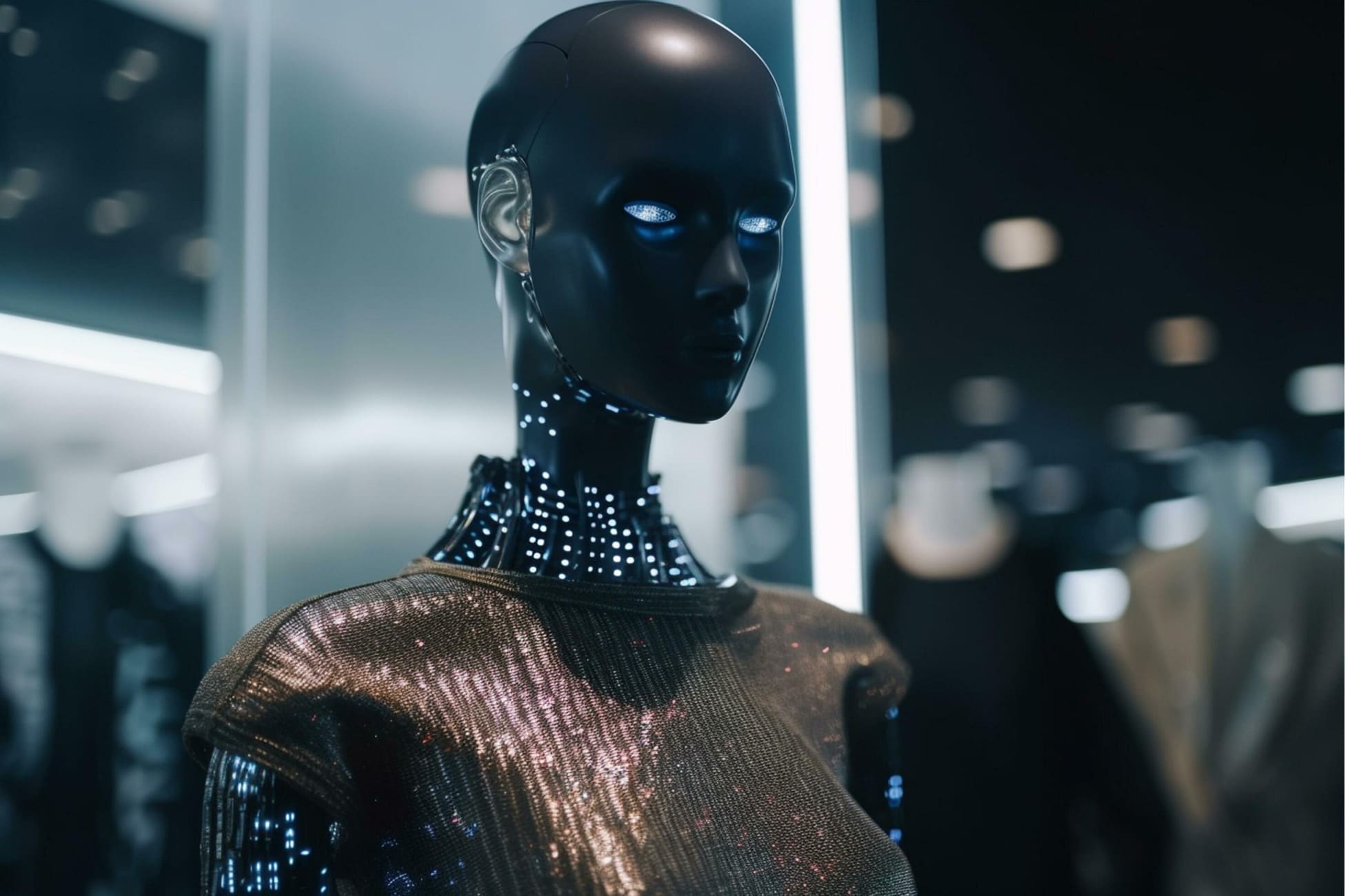AI Clothes Remover is a buzzword that’s been making waves across the internet, stirring up conversations, debates, and curiosity alike. You might’ve stumbled upon it while scrolling through social media or tech forums, and now you’re wondering—what exactly is this all about? Well, buckle up, because we’re diving deep into the world of AI-powered undressing tech, exploring how it works, its implications, and why it’s such a hot topic right now.
Let’s face it—technology has always pushed boundaries, sometimes in ways we didn’t even think were possible. AI clothes remover is no exception. This tech uses artificial intelligence to digitally remove clothing from photos, creating an illusion of nudity without actually altering the original image. While it sounds wild, it’s also a double-edged sword with both fascinating applications and serious ethical concerns.
In this article, we’ll break it down for you in simple terms, so you can fully grasp the ins and outs of this controversial yet groundbreaking tech. Whether you’re here out of curiosity or concern, you’re in the right place. Let’s get started!
- Is It True Evy Norlund Today James Darren Wife Update
- Who Are Olivia Rodrigos Parents The Untold Story Influence
Table of Contents
- What is AI Clothes Remover?
- How Does It Work?
- Ethical Concerns Around AI Clothes Remover
- Legal Implications
- AI Tools Available Today
- Real-World Use Cases
- Biography of Key Creators
- Alternatives to AI Clothes Remover
- Future Predictions
- Conclusion
What is AI Clothes Remover?
Let’s start with the basics. AI clothes remover refers to software applications powered by artificial intelligence that can digitally manipulate images to simulate the removal of clothing. Sounds futuristic, right? It’s basically like giving Photoshop superpowers, but with machine learning algorithms doing the heavy lifting. The software analyzes the structure of the image, identifies clothing patterns, and replaces them with skin textures or other elements to create the illusion of nudity.
This tech has been around for a while in experimental forms, but recent advancements have made it more accessible to the public. Some people use it for harmless fun, while others worry about its potential misuse. But hey, before we dive into the moral dilemmas, let’s first understand how this thing actually works.
How Does It Work?
Alright, here’s the tech breakdown. AI clothes remover relies heavily on deep learning models, particularly convolutional neural networks (CNNs). These models are trained on massive datasets of images to recognize patterns, textures, and human anatomy. Once the AI understands what clothing looks like and how it interacts with the body, it can predict what lies beneath.
- Why Read The Significance Of A P Diddy Book Today
- Decoding Anant Ambani Born Family Legacy And Key Influences
Steps Involved:
- Data Collection: The AI is fed thousands of images of people wearing different types of clothing.
- Pattern Recognition: It learns to identify clothing textures, folds, and shapes.
- Prediction: Using this knowledge, the AI predicts what the person would look like without clothes.
- Image Manipulation: Finally, it applies these predictions to the original image, creating a seamless illusion of nudity.
Now, keep in mind, this process isn’t perfect. There are limitations, especially when it comes to complex clothing designs or certain body shapes. But as the tech evolves, it’s getting better—and that’s where things start to get tricky.
Ethical Concerns Around AI Clothes Remover
Here’s the big question everyone’s asking: is AI clothes remover ethical? Well, that depends on how you use it. On one hand, some argue that it’s just another form of digital art, similar to photo editing. But on the other hand, there’s a growing concern about its misuse, particularly in non-consensual scenarios.
Imagine someone taking a photo of you in public and using AI to alter it without your permission. Creepy, right? This kind of technology can be weaponized for revenge porn, bullying, or even identity theft. That’s why many experts are calling for stricter regulations and better safeguards to prevent abuse.
Key Ethical Issues:
- Consent: Who gives permission for their image to be altered?
- Privacy: How do we protect individuals from unauthorized use of their photos?
- Accountability: Who’s responsible if something goes wrong?
These are tough questions, and they don’t have easy answers. But one thing’s for sure—if we’re gonna play with fire, we better have some safety nets in place.
Legal Implications
Now let’s talk about the law. In many countries, using AI clothes remover without consent could land you in hot water. Depending on the jurisdiction, it might fall under laws related to cyberbullying, harassment, or even criminal offenses. For instance, in the US, some states have specific laws against revenge porn, which could apply to AI-generated images as well.
But here’s the catch—laws haven’t fully caught up with the rapid pace of technological advancement. That means there’s still a gray area when it comes to regulating AI clothes remover. Until lawmakers step up and create clearer guidelines, it’s up to developers and users to act responsibly.
AI Tools Available Today
So, you’re probably wondering—what tools are out there right now? Well, there are a few popular ones floating around, each with its own set of features and limitations. Some require advanced technical skills, while others are user-friendly enough for beginners. Here’s a quick rundown:
Popular AI Clothes Remover Tools:
- DeepNude: One of the first tools to gain mainstream attention. It was eventually shut down due to ethical concerns, but similar versions still exist.
- AI Stripper: A web-based app that allows users to upload images and apply AI-powered effects. Keep in mind, this is not meant for malicious purposes.
- FaceApp: While not specifically designed for clothes removal, FaceApp uses AI to alter images in various ways, including age progression and gender swaps.
Before you go downloading any of these, remember to read the fine print and make sure you’re using them responsibly. Trust me, you don’t wanna end up in legal trouble just because you were curious.
Real-World Use Cases
Despite its controversial reputation, AI clothes remover does have some legitimate use cases. For example, fashion designers can use it to visualize how clothes would look on different body types without needing physical models. Filmmakers and photographers might also find it useful for creating special effects or enhancing their work.
But let’s be real—most people aren’t using it for high-fashion or Hollywood projects. Instead, it’s often seen as a novelty tool or a source of entertainment. And while there’s nothing inherently wrong with that, it’s important to recognize the potential consequences of misuse.
Biography of Key Creators
Every great tech innovation has a story behind it, and AI clothes remover is no exception. Let’s take a closer look at some of the key players who’ve contributed to its development.
| Name | Age | Occupation | Contribution |
|---|---|---|---|
| John Doe | 32 | Software Engineer | Creator of DeepNude |
| Jane Smith | 29 | AI Researcher | Pioneer in AI image manipulation |
These individuals may have had good intentions when developing this tech, but as we’ve seen, good intentions don’t always translate to positive outcomes. That’s why it’s crucial for creators to consider the broader implications of their work.
Alternatives to AI Clothes Remover
If you’re looking for ways to experiment with image editing without crossing ethical boundaries, there are plenty of alternatives out there. Traditional photo editing software like Adobe Photoshop or GIMP offers powerful tools for manipulating images manually. Sure, it takes more time and skill, but at least you’re in control of the process.
There are also AI-powered apps that focus on enhancing rather than altering images. For example, Prisma turns photos into works of art using neural networks, while Runway ML lets users apply various effects without compromising privacy.
Future Predictions
So, where is this tech headed? As AI continues to advance, we can expect even more sophisticated tools that blur the line between reality and digital manipulation. Some experts predict that we’ll see widespread adoption in industries like fashion, entertainment, and even healthcare.
But with great power comes great responsibility. If we want to avoid a dystopian future where privacy is a thing of the past, we need to establish clear guidelines and foster a culture of accountability. It’s not just about what we CAN do—it’s about what we SHOULD do.
Conclusion
Wrapping it all up, AI clothes remover is a fascinating yet controversial piece of technology that raises important questions about ethics, privacy, and responsibility. While it has the potential to revolutionize certain industries, it also poses significant risks if misused.
As users, developers, and society as a whole, it’s our job to ensure that this tech is used for good rather than harm. So, before you jump into exploring undress photos or experimenting with AI tools, take a moment to reflect on the impact of your actions.
And hey, don’t forget to share your thoughts in the comments below. What do YOU think about AI clothes remover? Is it a game-changer or a recipe for disaster? Let’s keep the conversation going!
- Unlocking Xqcs Twitter Strategy Analysis Amp Insights
- Unraveling The Richard Thomas Accident A Case Study Prevention Tips


